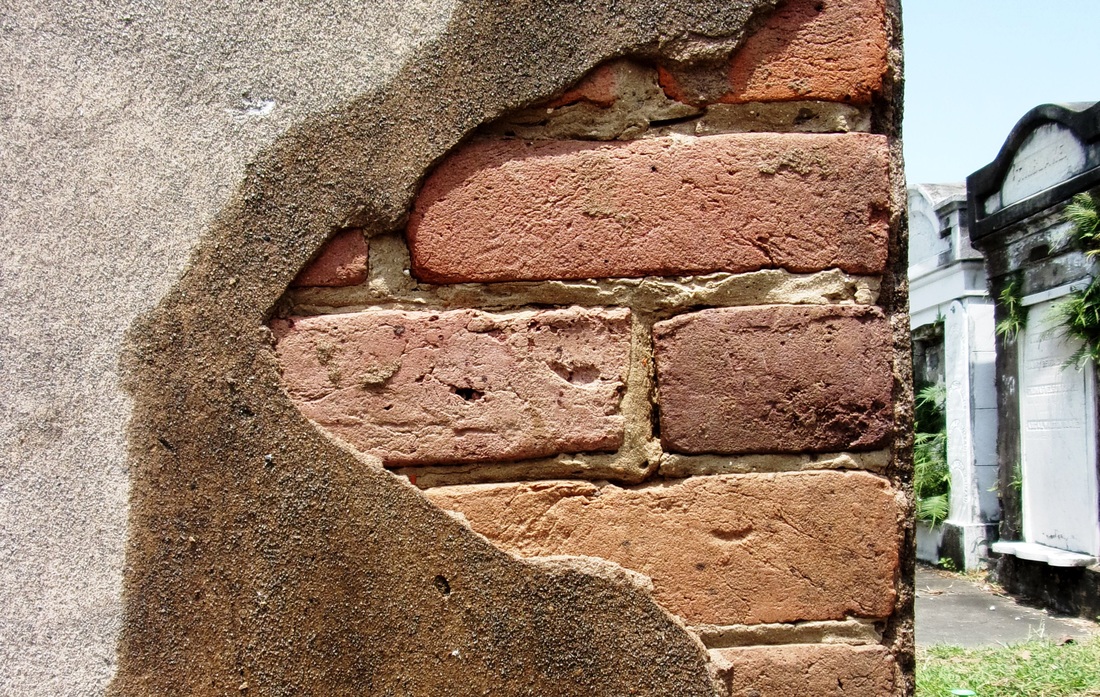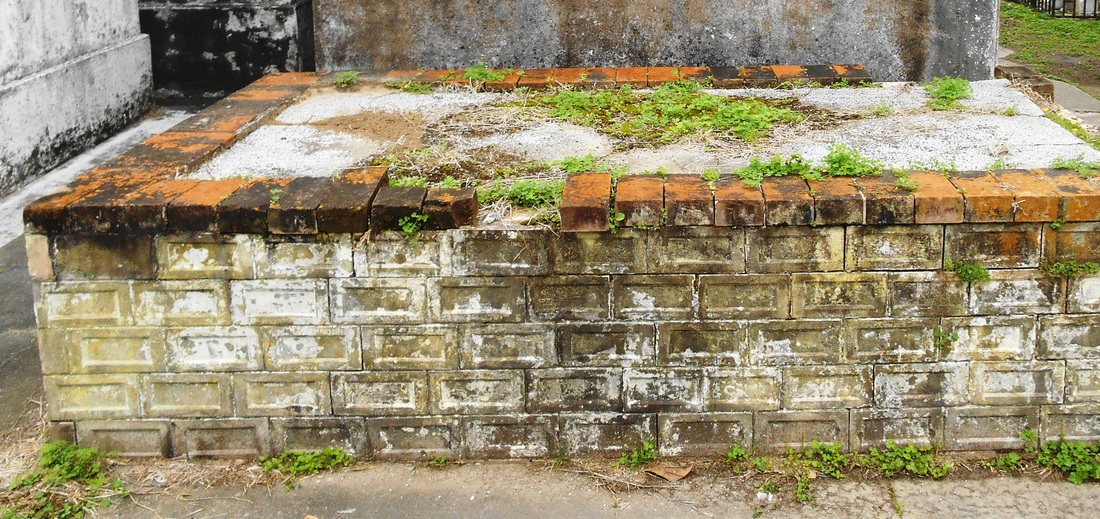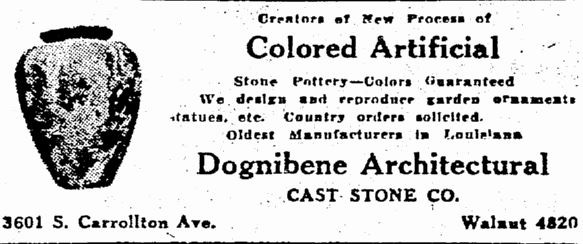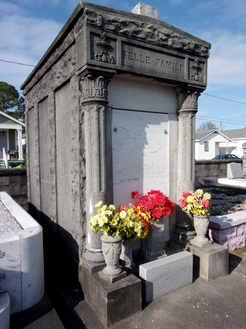|
Part Three of Three Brickmaking in the Late Nineteenth Century Expanding infrastructure and advancing technology led to a number of advances in brickmaking after the Civil War. These processes included dry-pressing, in which denser clay is compressed using steam-powered equipment, and extruding, in which the mold is abandoned for extruded clay cut with wires. In buildings, New Orleans saw entirely new materials like terra cotta and cast-iron storefronts. In New Orleans cemeteries, terra cotta was never established as a structural material. However, cast-iron companies like Wood, Miltenberger & Co. expanded their market by building catalog-ordered iron tombs. New Orleans has more than one dozen of these tombs remaining. In cemeteries, red river brick was almost entirely phased out, although many brickyards still produced them.[1] Many bricks found in tombs of this era show different variations in color, texture, and inclusions, but much are similar to “hard tans,” indicating sources in St. Tammany Parish. This is likely, as even more brickyards developed there after 1865.[2] 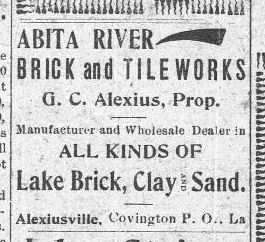 from the St. Tammany Farmer, October 24, 1908. Image courtesy Library of Congress. from the St. Tammany Farmer, October 24, 1908. Image courtesy Library of Congress. Among the St. Tammany brickyards to establish and grow in the late 19th century was St. Joe Brick Company. Founded in 1891, St. Joe Brick used (and still uses) wooden molds for brick manufacture. St. Joe bricks, are found throughout New Orleans cemeteries, where their porousness, dimension, and breathability suited tombs coated in lime stucco. Entire tombs were constructed using exclusively St. Joe Brick. Today, St. Joe bricks can still be purchased from the company’s Pearl River yard and other distributors. Like historic salvaged bricks, they mimic the qualities builders sought in historic building materials.[3] New Materials and Methods From the turn of the century, industrialized building materials inched further and further into the New Orleans cemetery landscape. Most notably, modern cements became more and more available until, after World War II, they were the norm. This meant Portland cement stucco replacing lime. But it also meant the rise of cast concrete, cast stone, and concrete block. A notable example of this was Dognibene Architectural Cast Stone, a company that seems to have dealt primarily with garden features and pottery, but also built tombs. Three Dognibene tombs are known to exist from the 1920s: Two in Hook and Ladder Cemetery (Gretna), and one in Cypress Grove Cemetery. Today, New Orleans bricks are more important to cemetery preservation than ever. Most historic tombs, especially those in need of repair or attention, require brick replacement, a difficult task in a world where traditional brickmaking is all but phased out. The desire for historic brick to be used in walls, paving, and historic buildings also put tombs at risk of brick theft, an incident that is all too common. Even more material is lost to unsympathetic repairs applied to soft brick which can constrict materials and cause cracking, breaking, or even structural failure.
Oak and Laurel Cemetery Preservation, LLC only uses historically-appropriate brick for repairs. Where brick must be replaced, brick of similar density and dimension is chosen – we do not salvage bricks from other cemeteries or tombs. You never know who will come back to care for their historic burial place. [1] American Engineer, Vol. 16 (July 1888), 13. [2] “Tammany Steam Brick Yard,” Times Picayune, December 24, 1871, 15; “Lake Brick for Sale,” St. Tammany Farmer, October 24, 1908. [3] “History of St. Joe Brick Works,” http://www.stjoebrickworks.com/history.html; Dave Macnamara, “Heart of Louisiana: St. Joe Brick Works,” Fox 8 Live, January 11, 2013, http://www.fox8live.com/story/19517618/heart-of-louisiana-st-joe-brickworks.
1 Comment
Tom
9/14/2015 06:15:10 pm
Great article! Thanks for posting.
Reply
Your comment will be posted after it is approved.
Leave a Reply. |
About the Author:Emily Ford owns and operates Oak and Laurel Cemetery Preservation, LLC. Archives
November 2019
Categories
All
|
- About
-
Restoration
- Services
-
Portfolio
>
- Turning Angel Statue, Natchez, MS
- Ledger Monument, Baton Rouge, LA
- Pyramid Statuary, New Orleans, LA
- Bronze and Granite Monument, Carville, LA
- Box Tomb, New Orleans, LA
- Vernacular Concrete Monument, Pensacola, FL
- 1830s Family Tomb, Covington, LA
- 1850s Family Tomb, New Orleans, LA
- 1880s Family Tomb, New Orleans, LA
- Headstone and Monument Restorations, Pensacola, FL
- Society Tomb, New Orleans, LA
- Education
- Blog
- Contact
|
Oak and Laurel Cemetery Preservation, LLC is a preservation contractor in New Orleans, Louisiana, specializing in historic cemeteries, stone conservation, educational workshops and lectures. Oak and Laurel serves the region of the Southeastern US.
|
QUICK LINKS |
CONNECT |
Proudly powered by Weebly

